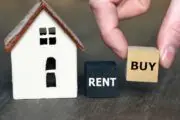The high price of homes in many parts of the country has some buyers curious about alternative forms of housing, including the likes of 3D-printed homes.
In a new survey released last week, Realtor.com found that 66 per cent of all consumers would consider living in a 3D-printed home, 75 per cent of which are Millennials. The online survey, which was carried out by HarrisX in July 2021, gathered responses from 3,026 U.S adult consumers.
A 3D-printed home involves the pouring of concrete through specially-designed nozzles in a series of stacked layers across a pattern.
George Ratiu, a senior economist with Realtor.com, stated in the report findings that the homebuilding industry has focused on the upper-end of the housing spectrum for the past decade, with expectations that young people would prefer renting. Meanwhile, the price of construction has pushed new homes out of the financial reach of many first-time home buyers. New home construction, Ratiu explained, plays a “pivotal role,” in meeting the growing demand for homeownership.

“As technology is advancing novel building solutions, anything we can do to reduce the cost of new construction and increase the number of available homes, especially at an affordable price point, will help to restore balance in this strong seller’s market,” said Ratiu.
Less than half of the surveyed group felt that 3D-printed homes will replace the traditional methods of homebuilding, with 30 per cent of all respondents and 43 per cent of the Millennial cohort sharing that belief. However, 42 per cent of those surveyed said that they had at least heard about 3D home printing technology, especially among recent home buyers, 63 per cent of whom were familiar with 3D-printed homes.
When it came down to the appeal of 3D-printed properties, more than half of consumers pointed to lower costs (54 per cent) and greater energy efficiency (51 per cent) as to the reasons that would persuade them to live in a printed home. Greater resistance to natural disasters (42 per cent), a faster construction timeline (41 per cent), the ability for more customization (39 per cent) and less waste production compared to traditional homebuilding (32 per cent) were also cited as compelling reasons.
Despite the benefits that 3D-printed homes offer to some consumers, others are still wary of the technology. More than a third of those surveyed (36 per cent) said that they wanted to wait and see how the technology will pan out over time. Other respondents said that they preferred the aesthetics of a traditional home (22 per cent), think it won’t last as long (22 per cent) or said that they don’t want their home to look exactly like their neighbors (18 per cent). Fourteen per cent of consumers also said that they didn’t trust the technology and preferred an existing home over a new construction one.
Although 3D printing technology is still developing, Ratiu pointed out that the survey data shows that consumers are still interested in 3D-printed homes.
“While there have only been a small number of 3D-printed homes sold to date, as the technology continues to advance, we could see it add more affordable homes to the housing market,” said Ratiu. “For the rising generations of digital natives, new building technology may provide a sustainable bridge toward homeownership.”







